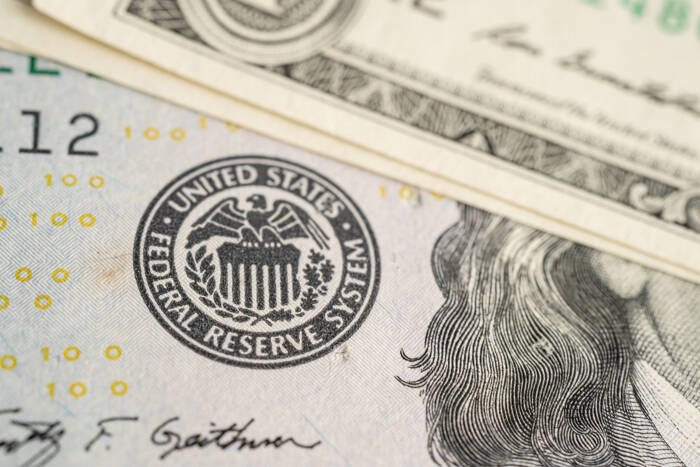The Australian Dollar (AUD) gains ground against the US Dollar (USD) on Thursday after recovering from daily losses. However, the AUD/USD pair faced challenges as traders adopt caution ahead of the United States (US) inflation data for September due on Friday amid a data blackout.
The AUD received support after US President Donald Trump said that he thinks something will work out with China in a meeting scheduled with China’s Xi Jinping in South Korea. Any shift in China’s economic conditions could also affect the Australian dollar (AUD), given the close trade ties between China and Australia.
The AUD/USD pair faces challenges amid growing bets of a near-term rate cut by the Reserve Bank of Australia (RBA). Australia’s latest employment report threw an unexpected curveball, with the jobless rate climbing to its highest level in nearly four years this September. The surprise spike jolted markets into upping the odds of a 25-basis-point rate cut to 70%, a sharp jump from roughly 40% just a week prior. Now, traders are on high alert, scouring the horizon for economic clues, from this week’s flash PMI readings to next week’s all-important Q3 CPI figures, in hopes of divining the central bank’s next move.
The AUD also draws support from improved market sentiment amid progress on a United States (US)-Australia trade agreement. President Trump and Australian Prime Minister Anthony Albanese signed a USD 8.5 billion critical minerals agreement at the White House on Monday, aimed at securing access to Australia’s abundant rare-earth resources amid China’s tighter export controls. Both nations also committed to investing at least USD 1 billion each over the next six months in mining and processing projects.
US Dollar gains as Trump expects agreements with China
- The US Dollar Index (DXY), which measures the value of the US Dollar (USD) against six major currencies, is gaining ground and trading around 99.00 at the time of writing. The Greenback received support from President Trump’s comments late Wednesday that he expects to strike several agreements with Chinese President Xi Jinping during their meeting in South Korea next week. The Trump-Xi discussions are expected to cover a wide range of issues, including US soybean exports, limiting nuclear weapons, and China’s purchases of Russian Oil.
- The US Dollar may struggle as the prolonged US government shutdown delays the key US economic data releases, including Nonfarm Payrolls (NFP), adding uncertainty for financial markets and the Federal Reserve (Fed).
- The US government shutdown has entered its fourth week as the Senate on Monday failed for the 11th time to advance a House-passed measure to fund the government and end the ongoing shutdown. The 50-43 vote fell mostly along party lines. This marks the third-longest funding lapse in modern history.
- A Reuters poll suggested that 115 out of 117 economists have predicted that the Fed will reduce interest rates by 25 basis points (bps) to 3.75%-4.00% in the monetary policy announcement on October 29. For the year, 83 of 117 economists expect the US Federal Reserve to cut interest rates twice, while 32 anticipate one cut.
- The CME FedWatch Tool indicates that markets are now pricing in nearly a 97% chance of a Fed rate cut in October and a 96% possibility of another reduction in December.
- The People’s Bank of China (PBOC) decided on Monday to keep its one- and five-year Loan Prime Rates (LPRs) unchanged at 3.00% and 3.50%, respectively.
- China’s Gross Domestic Product (GDP) grew 4.8% year-over-year (YoY) in the third quarter (Q3) of 2025, as expected following a 5.2% growth in the second quarter. Meanwhile, the economy expanded 1.1% quarter-over-quarter (QoQ), surpassing the market consensus of 0.8% print.
- China’s annual June Retail Sales increased by 3.0% in September, against 2.9% expected and 3.4% prior, while Industrial Production came in at 6.5% vs. 5.0% estimate and August’s 5.2%.
Australian Dollar targets 0.6500 barrier near nine-day EMA
AUD/USD is trading around 0.6490 on Thursday. Technical analysis of a daily chart suggests a persistent bearish bias, with the pair trading within a descending channel. The 14-day RSI remains below 50, suggesting the bearish outlook is strengthening.
On the downside, the AUD/USD pair may navigate the area around the four-month low of 0.6414, followed by the lower boundary of the descending channel around 0.6400. A break below this confluence support zone would strengthen the bearish bias and prompt the pair to test the five-month low of 0.6372.
The AUD/USD pair is testing the immediate barrier at the psychological level of 0.6500, aligned with the nine-day Exponential Moving Average (EMA) of 0.6504. Further advances would improve the short-term price momentum and support the pair to test the 50-day EMA at 0.6541, followed by the descending channel’s upper boundary around 0.6560.
AUD/USD: Daily Chart

Australian Dollar Price Today
The table below shows the percentage change of Australian Dollar (AUD) against listed major currencies today. Australian Dollar was the strongest against the Japanese Yen.
| USD | EUR | GBP | JPY | CAD | AUD | NZD | CHF | |
|---|---|---|---|---|---|---|---|---|
| USD | 0.15% | 0.07% | 0.38% | -0.02% | -0.17% | -0.00% | 0.18% | |
| EUR | -0.15% | -0.08% | 0.25% | -0.17% | -0.32% | -0.16% | 0.03% | |
| GBP | -0.07% | 0.08% | 0.31% | -0.08% | -0.24% | -0.08% | 0.11% | |
| JPY | -0.38% | -0.25% | -0.31% | -0.40% | -0.55% | -0.41% | -0.20% | |
| CAD | 0.02% | 0.17% | 0.08% | 0.40% | -0.14% | 0.03% | 0.20% | |
| AUD | 0.17% | 0.32% | 0.24% | 0.55% | 0.14% | 0.16% | 0.35% | |
| NZD | 0.00% | 0.16% | 0.08% | 0.41% | -0.03% | -0.16% | 0.19% | |
| CHF | -0.18% | -0.03% | -0.11% | 0.20% | -0.20% | -0.35% | -0.19% |
The heat map shows percentage changes of major currencies against each other. The base currency is picked from the left column, while the quote currency is picked from the top row. For example, if you pick the Australian Dollar from the left column and move along the horizontal line to the US Dollar, the percentage change displayed in the box will represent AUD (base)/USD (quote).
Australian Dollar FAQs
One of the most significant factors for the Australian Dollar (AUD) is the level of interest rates set by the Reserve Bank of Australia (RBA). Because Australia is a resource-rich country another key driver is the price of its biggest export, Iron Ore. The health of the Chinese economy, its largest trading partner, is a factor, as well as inflation in Australia, its growth rate and Trade Balance. Market sentiment – whether investors are taking on more risky assets (risk-on) or seeking safe-havens (risk-off) – is also a factor, with risk-on positive for AUD.
The Reserve Bank of Australia (RBA) influences the Australian Dollar (AUD) by setting the level of interest rates that Australian banks can lend to each other. This influences the level of interest rates in the economy as a whole. The main goal of the RBA is to maintain a stable inflation rate of 2-3% by adjusting interest rates up or down. Relatively high interest rates compared to other major central banks support the AUD, and the opposite for relatively low. The RBA can also use quantitative easing and tightening to influence credit conditions, with the former AUD-negative and the latter AUD-positive.
China is Australia’s largest trading partner so the health of the Chinese economy is a major influence on the value of the Australian Dollar (AUD). When the Chinese economy is doing well it purchases more raw materials, goods and services from Australia, lifting demand for the AUD, and pushing up its value. The opposite is the case when the Chinese economy is not growing as fast as expected. Positive or negative surprises in Chinese growth data, therefore, often have a direct impact on the Australian Dollar and its pairs.
Iron Ore is Australia’s largest export, accounting for $118 billion a year according to data from 2021, with China as its primary destination. The price of Iron Ore, therefore, can be a driver of the Australian Dollar. Generally, if the price of Iron Ore rises, AUD also goes up, as aggregate demand for the currency increases. The opposite is the case if the price of Iron Ore falls. Higher Iron Ore prices also tend to result in a greater likelihood of a positive Trade Balance for Australia, which is also positive of the AUD.
The Trade Balance, which is the difference between what a country earns from its exports versus what it pays for its imports, is another factor that can influence the value of the Australian Dollar. If Australia produces highly sought after exports, then its currency will gain in value purely from the surplus demand created from foreign buyers seeking to purchase its exports versus what it spends to purchase imports. Therefore, a positive net Trade Balance strengthens the AUD, with the opposite effect if the Trade Balance is negative.





